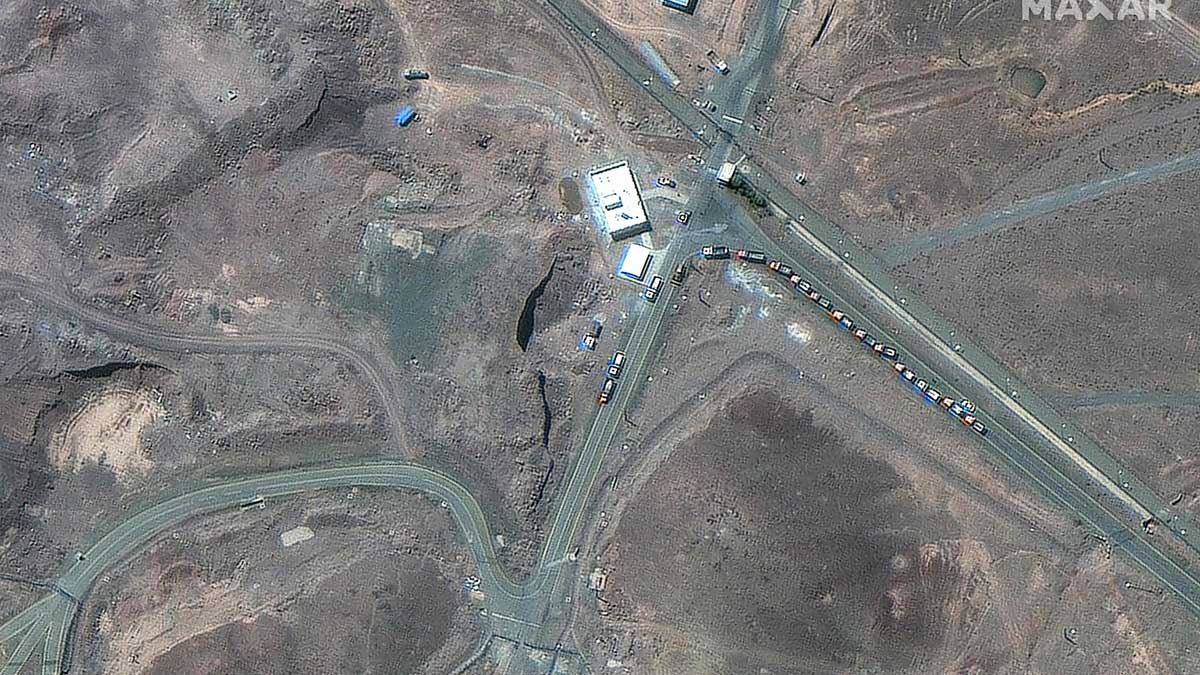US attacks on Iran’s nuclear sites fall short of Trump’s claims, says Pentagon report
 Cargo trucks postioned near an underground entrance to Iran's Fordow Fuel Enrichment Plant (FFEP), in Fordo | AFP
Cargo trucks postioned near an underground entrance to Iran's Fordow Fuel Enrichment Plant (FFEP), in Fordo | AFP
The United States' strikes on Iran’s nuclear facilities have not destroyed the Islamic Republic’s nuclear programme and likely only set it back by several months, according to an early Pentagon intelligence assessment.
Despite President Donald Trump’s repeated claims that Iran’s nuclear capacity had been “completely and fully obliterated,” a classified initial assessment by the Defence Intelligence Agency (DIA) suggests otherwise. It says that while damage was inflicted on above-ground infrastructure, key components of the nuclear programme remain largely intact and could be restored within months.
The assessment found that Iran’s stockpile of enriched uranium, much of which had been moved before the bombings, was not destroyed. Critical equipment, including centrifuges, also survived the strikes and are believed to be restartable in a matter of months. Entrances to two of the targeted facilities were sealed off and some structural damage occurred, but most of the deeper infrastructure, particularly at sites buried underground, endured the bombardment.
The attack, conducted over the weekend, targeted three major nuclear sites: Fordow, Natanz and Isfahan. US B-2 bombers dropped 12 GBU-57 “bunker buster” bombs on Fordow and two on Natanz. Additionally, a US Navy submarine launched around 30 Tomahawk cruise missiles at Isfahan. While these operations inflicted severe damage to surface structures, particularly power supplies and buildings used to convert uranium into weapons-grade metal, they failed to eliminate the underground enrichment facilities.
Fordow, long considered Iran’s most fortified site, is situated beneath 45 to 90 metres of bedrock in the Zagros mountains. Top Pentagon appointees were reportedly briefed at the beginning of Trump’s second term that the 13,600kg GBU-57 bombs were unlikely to penetrate deeply enough to destroy the facility. Officials from the Defence Threat Reduction Agency had concluded that only a tactical nuclear weapon could achieve that objective.
According to Iranian state media, the sites had been evacuated well before the strikes. Hassan Abedini, deputy political director of Iran’s state broadcaster, claimed the bombings caused limited damage because enriched uranium and sensitive equipment had already been removed. He said, “We didn’t suffer a major blow because the materials had already been taken out.”
Rafael Grossi, Director General of the International Atomic Energy Agency (IAEA), confirmed on June 23 that the agency could no longer account for around 400kg of uranium enriched to 60 per cent purity, a level dangerously close to weapons-grade. US Vice President J.D. Vance admitted that Washington was unsure of the stockpile’s current location, stating, “We are going to work in the coming weeks to ensure that we do something with that fuel.”
The Israeli government offered a slightly more optimistic view of the damage. While it agreed that Fordow had not been destroyed, Israeli defence officials believe the combination of US and Israeli military action has likely delayed Iran’s programme by up to two years—if Iran is able to rebuild it without further interference, which Israel vowed to prevent. Prime Minister Benjamin Netanyahu declared the campaign a “historic victory” that “will stand for generations,” pledging to continue military pressure until Iran’s nuclear ambitions and its regional influence are dismantled.
However, some within the US defence establishment appear to share the DIA’s more cautious view. General Dan Caine, Chair of the Joint Chiefs of Staff, said the sites had sustained “severe damage and destruction” but noted that the full battle damage assessment was still underway. In contrast, Defence Secretary Pete Hegseth reiterated Trump’s language, claiming the sites had been “obliterated”.
Democratic lawmakers have expressed concern over the lack of transparency surrounding the strikes, which were authorised by Trump without congressional approval. House Minority Leader Hakeem Jeffries questioned the president’s characterisation of the outcome, saying, “There apparently are reasons to believe that that was a blatant misrepresentation made by Donald Trump to the American people.”
Media reports first broke the story of the Pentagon’s internal doubts. CNN and the New York Times both cited sources familiar with the classified DIA report, which directly contradicts Trump’s public assertions.
The White House has pushed back forcefully. In a televised statement on Saturday night, Trump declared the US had “completely destroyed” Iran’s enrichment facilities. On his Truth Social platform, he accused the two media organisations of conspiring to discredit what he called “one of the most successful military strikes in history,” adding, “The nuclear sites in Iran are completely destroyed! Both the Times and CNN are getting slammed by the public!”
White House press secretary Karoline Leavitt dismissed the intelligence findings and the media reports, calling the assessment “flat-out wrong”. She said in a statement: “The leaking of this alleged assessment is a clear attempt to demean President Trump, and discredit the brave fighter pilots who conducted a perfectly executed mission to obliterate Iran’s nuclear program.”
Middle East